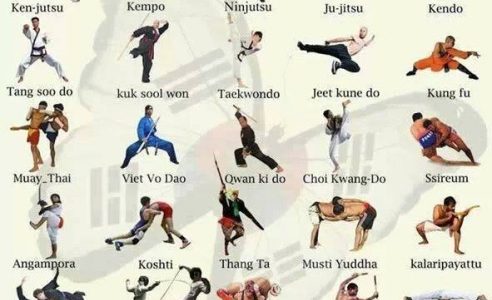The Principles And Importance Of Taekwondo Kinds
The Principles And Importance Of Taekwondo Kinds
Blog Article
Content Writer-Nicolajsen Bradshaw
Did you recognize that there more than 20 various taekwondo forms, each with its own unique series of movements and techniques? These kinds, likewise referred to as poomsae, play a crucial duty in the practice and advancement of taekwondo specialists.
Yet just what are martial arts near me for youth , and why are they so significant? In read on , we will check out the fundamentals of taekwondo kinds, their beginnings, and the crucial elements that make them an essential part of this martial art.
Whether martial arts store near me 're a beginner or a skilled expert, comprehending the relevance of taekwondo types will certainly strengthen your appreciation for this ancient technique and improve your trip towards proficiency.
Beginnings and Development
The beginnings and advancement of Taekwondo can be traced back to ancient fighting styles techniques in Korea. It was developed over 2,000 years back and has since turned into a popular and worldwide acknowledged sport.
Taekwondo was heavily influenced by numerous Oriental martial arts designs, such as Taekkyon and Subak, as well as Chinese martial arts. It was at first made use of as a way of protection, but gradually, it developed right into a competitive sporting activity that concentrates on striking techniques and high kicks.
In the 20th century, Taekwondo undertook a substantial change and was standard into its modern form. The Korea Taekwondo Organization played an essential duty in this procedure, assisting to establish guidelines, techniques, and forms that are still followed today.
Key Elements and Methods
Now let's check out the basic aspects and methods of Taekwondo. To totally comprehend the key elements and strategies, it is very important to dig deeper right into the complying with subtopics:
- Positions: Taekwondo highlights the proper use stances, such as the front position, back position, and equine stance. These stances offer stability, balance, and power in performing various techniques.
- Strikes and Kicks: Taekwondo is renowned for its powerful and vibrant kicks, including the front kick, roundhouse kick, and side kick. Strikes, such as strikes and knifehand strikes, are additionally necessary techniques in Taekwondo.
- Blocks and Protection: Reliable protection is important in Taekwondo. Blocks, such as the high block and reduced block, are made use of to shield against incoming attacks. Correct timing and positioning are vital to efficiently protecting oneself.
Advantages and Impact
One of the significant benefits of practicing Taekwondo is the renovation of physical conditioning and overall wellness. By engaging in routine training sessions, you can enhance your cardio health and wellness, strength, adaptability, and endurance. Taekwondo involves a variety of activities that target various muscle mass teams, helping you build a solid and toned body.
In addition, this fighting style promotes psychological well-being by minimizing stress and anxiety degrees. The discipline and focus called for in practicing Taekwondo can aid boost your concentration and boost your capability to handle challenging situations.
In addition, the practice of Taekwondo imparts a feeling of confidence, self-control, and self-constraint, which can positively influence different areas of your life. Generally, practicing Taekwondo can lead to a much healthier and extra balanced way of life.
Highly recommended Internet page have it! Taekwondo forms aren't simply simple regimens, yet a representation of the abundant history and evolution of this martial art. By understanding the key elements and strategies, professionals can enjoy various physical and mental advantages.
From boosted flexibility and toughness to improved emphasis and technique, taekwondo forms have a long lasting impact on those who practice them.
So, whether you're a novice or a skilled martial musician, embrace the power of these forms and let them take you on a trip via time.
